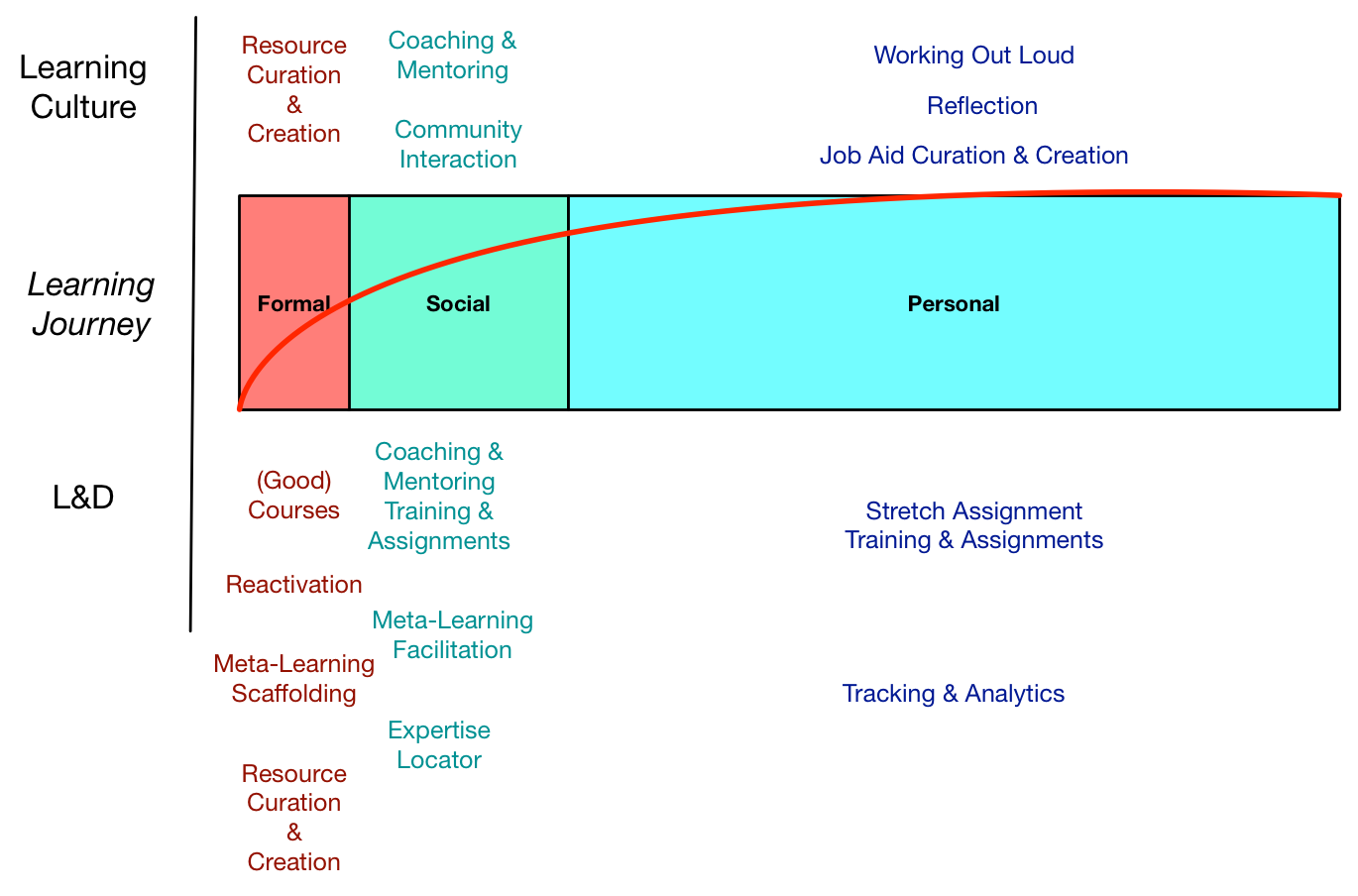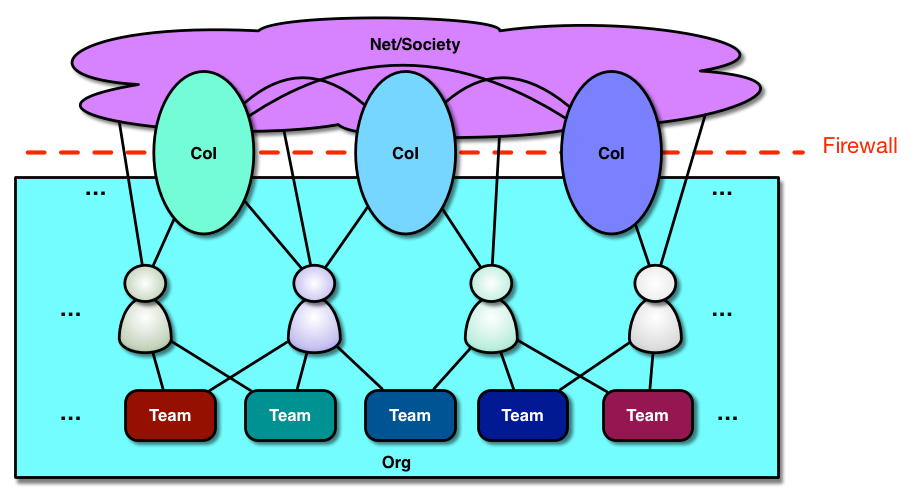I was inspired by a diagram that my ITA colleague Harold Jarche included in a post, where he puts some concepts into their 70:20:20 role as either people, skills, or tools. And I obviously believe the role of L&D should be shifting (as in a full revolution :), but I realize that putting it together can seem confusing, and so it led me to think a little bit about what’s the role for L&D versus what’s the role of the community. As a first cut, as usual.
 My breakout starts with the 10 (though you should start your solution thinking with the 70, as my colleague Charles Jennings suggests). Here I’m seeing what L&D can do, and what should be expected to come from a vibrant learning culture (which is also the role of L&D.
My breakout starts with the 10 (though you should start your solution thinking with the 70, as my colleague Charles Jennings suggests). Here I’m seeing what L&D can do, and what should be expected to come from a vibrant learning culture (which is also the role of L&D.
And it’s true that we see the traditional work of courses here (no, we’re not coming for your courses), though of course ones that meet the minimum daily standard of Serious learning, now set by your learning quality evangelists. And reactivating the learning, to make it stick.
Another task for L&D building in meta-learning opportunities and deliberately developing them in addition to whatever domain skills matter. Also, curating (and, occasionally) creating resources for self-study. If someone wants to learn something, resources before courses may be a more practical approach, particularly if it’s relatively unique. And, of course, curation trumps creation. And on the Culture side, the community should also be curating and creating resources.
Then we segue to the social. Here, the community is taking the role of coaching and mentoring, and the individual is engaging with the community. However, assuming good coaching and mentoring skills would be a mistake, so there’s a real for L&D to provide explicit development of coaching and mentoring, as well as ensuring that those relationships are established and occur. There’s also a role for facilitating meta-learning, helping folks learn to work out loud and reflect. These are essential components of my colleague Jane Hart’s Modern Workplace Learning. There’s also a role to ensure people can find others with useful expertise to tap into, within or across communities.
Finally, out at the personal end (and don’t think that it really transitions like this, there’s lots of overlap), individual practices are of working out loud and reflecting. The individual and the community should be building, as well as using, performance support like job aids. L&D can assist by helping ensure that there’s a ‘stretch assignment’ plan, and good rubrics about what constitutes a good stretch assignment, whether training or job aid. And, of course, L&D should be looking at what’s happening and looking for opportunities to tune and improve, as well as any emergent phenomena.
Finally, of course, one final role for L&D is to ensure that there is a learning culture. This is an important process. Recognize that it’s about a performance ecosystem organized to facilitate organizational learning at the individual and community level. It’s about having the individual have the tools ‘to hand‘ to continue to develop and perform. The goal is a coherent organization.
